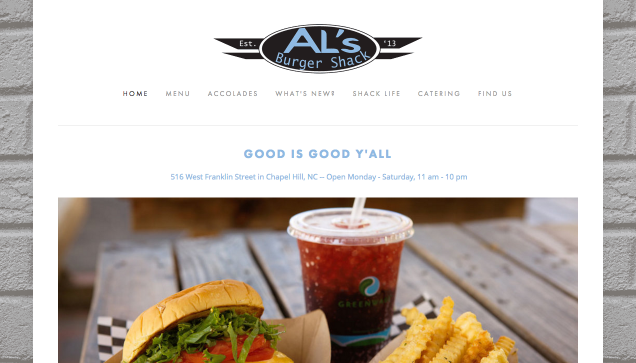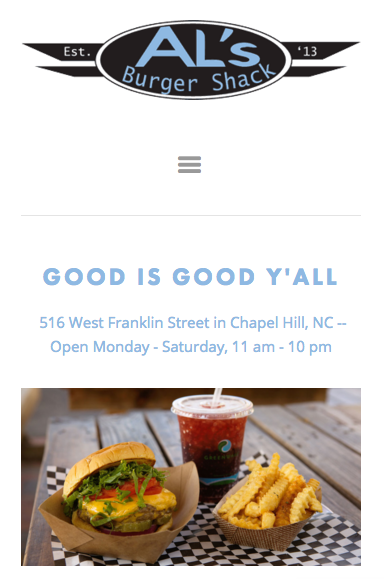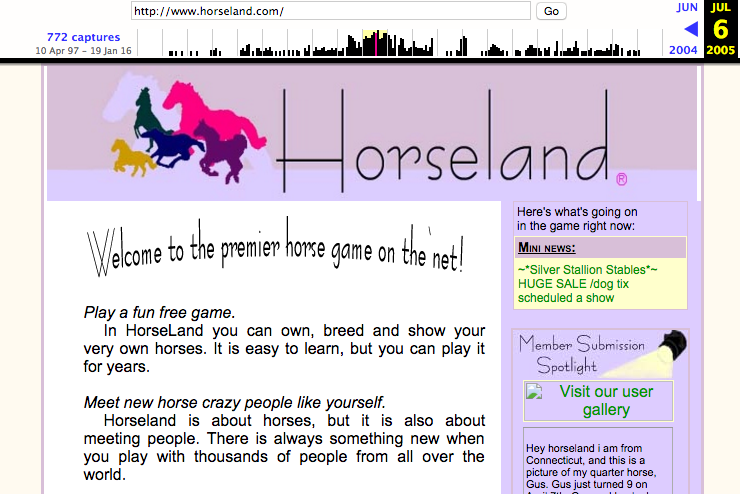For whatever reason, one of my strongest memories as a child is the interior of what used to be Foster’s Market. Its tall yellow walls are forever ingrained into my mind and along with them, the name Foster’s Market. Although the cafe rebranded in 2014 under the name The Root Cellar Cafe & Catering, I can’t seem to break the habit of calling it Foster’s.
Sara Foster originally opened the Chapel Hill store in 1998 as an expansion of the Foster’s Market of Durham, which is alive and well today. But Sera Cuni, who became a kitchen manager in 2006, purchased the market in January 2013 along with her partner, Susan White. With the help of local brand development firm The Splinter Group, the pair pulled off a brand overhaul. Have a look at the results below.
LOGO
Cuni and White explain that one of their goals in rebranding is to place greater emphasis on the cafe’s commitment to serving local and freshly made food. The new logo directly conceptualizes the trendy slogan “farm to fork” with an illustration of a fork stabbing into a fresh root (presumably a carrot). If that’s not an effective visual that captures the essence of Cuni and White’s mission, I don’t know what is.

Aside from the illustration itself, The Root Cellar’s logo conveys a commitment to scratch-made food through its vintage style and color scheme. The fine line sketch is reminiscent of an engraving or woodcut printing technique, which leaves an organic or natural impression. The main typeface, which appears to be a condensed version of Abraham Lincoln, also contributes to the vintage style. As for coloring, reddish brown colors are often associated with autumn, when farmers harvest their fresh produce.
The concept and execution of this logo fulfill how Cuni and White sought to portray their new brand – a cafe rooted in its commitment to serving local and organic food.
BUILDING SIGNAGE
The building signage bridges the gap between the old and the new. All exterior signs of course say “The Root Cellar,” but those familiar white letters are here to stay. Below is a photo of the old signage just before being taken down.
While this lettering is inconsistent with typefaces used in the logo, online and on menus, I appreciate its nod to the former brand. I can also imagine that the choice was made to maintain consistency with the signs of other stores in the mini plaza. The old “Foster’s” letters are now displayed inside the cafe. Below is the new setup.
To new beginnings! #rootcellarchapelhill #chapelhill #newbeginings
A photo posted by @rootcellarchapelhill on
The new logo is printed in white on the entrance, a treatment that really lets the fine lines of the illustration shine.
WEB DESIGN
The Root Cellar’s website is modern and easy to read, highlighting the logo and red-grey color scheme. Photos are of high quality and are well-framed.
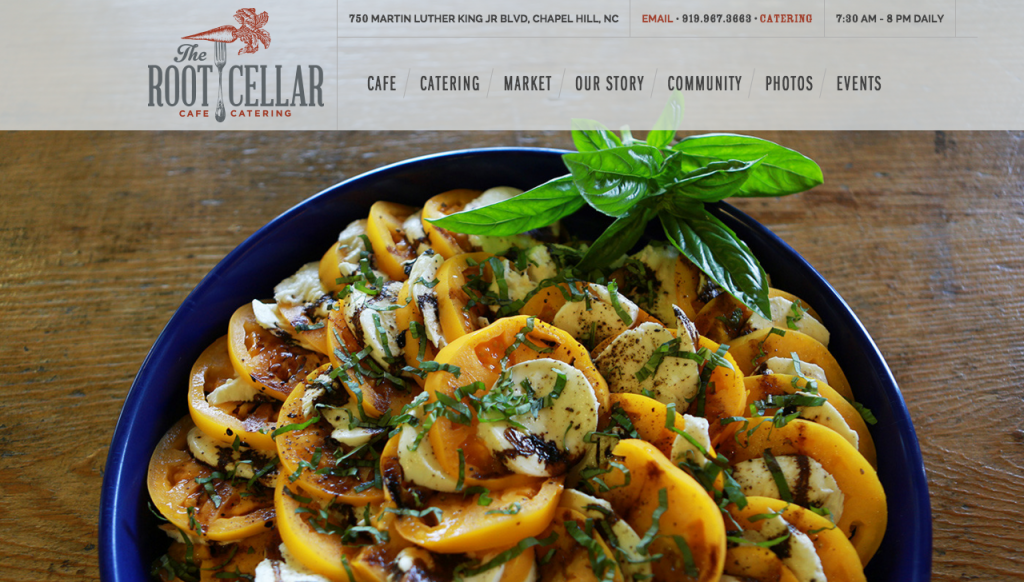
The website is responsive to different browser widths and therefore looks great on a computer or a phone, though at certain browser sizes, the menu becomes awkward. Overall though, the website contributes to a uniform image.
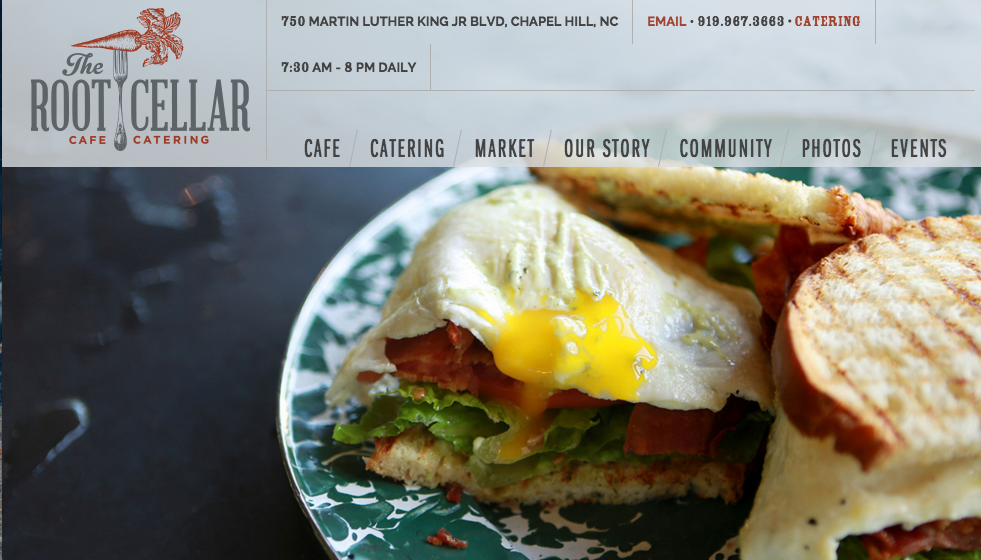
Aside from the clean and professional style, the site also makes clear the history of The Root Cellar. It includes “Formerly Foster’s Market” in its web title, which is useful for when someone searches for Foster’s Market on Google. At the bottom of every page, the website links to an explanation of the rebranding with the following verbiage: “The Root Cellar was formerly Foster’s Market Chapel Hill. Read more about our name change →.”
SOCIAL MEDIA
Facebook – 1,856 likes
Twitter – 207 followers
Instagram – 409 followers
The Root Cellar has significantly more likes on Facebook than it does followers on Twitter and Instagram because the Twitter and Instagram accounts needed to be created from scratch. The Root Cellar’s social media efforts consist largely of publicizing food specials and farm events, a monthly occasion in which the cafe partners with a farm to put on a meal made with tasty local ingredients. In other posts, The Root Cellar will highlight a specific fresh or local ingredient it uses or sells. Although the cafe is still working on gaining followers on Twitter and Instagram, its frequent and consistent messaging aligns with its mission of providing fresh and organic food.
COMMUNITY RELATIONS
Cuni and White aren’t just interested in selling fresh and local food. They also believe it’s important to give back to the community, and their interests lie specifically in ending child hunger and supporting LGBT rights. Some of the organizations The Root Cellar partners with include TABLE, the Arc of Orange County, Extraordinary Ventures and the LGBT Senior Group of Chapel Hill.
While Cuni and White’s involvement in nonprofits is true and relevant to their trade, there is little news coverage regarding The Root Cellar’s investment in the community. Publicity may not be the main priority or reason for giving back, but perhaps The Root Cellar would benefit from reaching out to its nonprofit partners and asking them to issue news releases on their behalf. For example, The Root Cellar hosted a dinner and silent auction to benefit TABLE, but TABLE did not issue a news release to publicize the event (though the nonprofit did mention it on social media).
THE BOTTOM LINE
The Root Cellar’s rebranding efforts refocused and emphasized its farm-to-fork mission through strong visual branding, social media and community relations. Yet I still refer to the cafe as “Foster’s.” Do you call this restaurant by its former name? Or has the rebranding imprinted “The Root Cellar” into your brain? Comment below with your thoughts!



